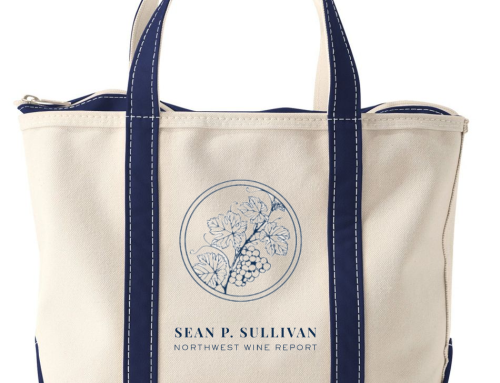The following post was written by contributor Erika Szymanski. Read more about Szymanski here.

WSU – initially called the Washington Agricultural College and School of Science, interestingly enough – was founded in 1892 as a land grant institution, which obliged it to provide education for Washingtonians in applied sciences. At the time, ‘applied sciences’ mostly amounted to various forms of agriculture, including viticulture, and not all that much has changed; agricultural sciences are still its strong suit. When the university first got going, Washington was a major grower of table grapes but had almost no commercial grape wine industry; popular wisdom (or folly, rather) had it that Washington was too cold for Vitis vinifera (the European wine grapes we know and love, as opposed to native American grapes like Concord). That was, of course, poppycock. The trick was figuring out how to protect vines from cold weather and what could be grown in the near-desert eastern parts of the state, and that’s exactly what Walter Clore and the other first-generation researchers at WSU did.
Walter Clore – whose name you might recognize from the new partially WSU-sponsored wine and culinary center bearing his name currently under construction in Prosser – came to WSU as a graduate student from Oklahoma in 1934 and almost single-handedly built Washington state’s viticulture and enology research endeavors. By 1937 he had research vines planted at the school’s Prosser research station, which still exists and where the bulk of WSU’s viticulture research still happens. In the ‘30s and ‘40s, the focus was mostly on labrusca grapes – Muscats were just about the only viniferas happening here at that time that we’d still recognize – and on improving baseline wine quality: preventing spoilage, keeping incompletely-fermented bottles from exploding on grocers’ shelves, and other basics we now take for granted.
Washington’s wine quality was mostly sneer-worthy, partially because of a law restricting the sale of non-Washington wine inside the state – little competition meant little incentive to improve – and partially because no one had thought much about the potential for Washington’s wine to be any better. Research at the Prosser Irrigation Experiment Station (which still exists, at the same location in Prosser, and is now called the Irrigated Agriculture Research and Experiment Center), mostly led by Dr. Clore, tested hundreds of other varieties and proved that a lot of them did splendidly well in Washington state if you just knew how to care for them properly.
In 1964 the Washington Wine and Grape Growers Council began funding viticulture and enology research at WSU and, while the state and private sources – Washington wine giant Ste. Michelle most prominently – have increasingly picked up the tab, the research partnership between WSU and Washington’s wine industry has only grown since then.
WSU has done a lot for you, whether you’re a consumer or in the industry, in the vineyard, in the winery, or in sales and marketing. A few examples:
– Dr. Marcus Keller and the rest of the viticulture research team developed a grapevine cold hardiness model that predicts how much damage cold weather will inflict on different, specific grape varieties (the application has been available since the end of 2011).
– Plant pathologists and entomologists are working out how mealy bugs transmit grape leafroll virus, a significant scourge in Washington, and what can be done about it. They’ve already figured out how powdery mildew was surviving Washington winters and how to go about controlling that problem.
– WSU operates the Clean Plant Center Northwest, the regional source of thoroughly tested, disease-free foundation and certified grapevines for Washington, Oregon, and Idaho. The Clean Plant Center tests for even more diseases and viruses than these states’ quarantine laws require.
– WSU offers the only wine business management undergraduate degree in the country.
– Graduate students in food science, plant pathology, horticulture, and entomology are working on problems like how and where Brettanomyces can survive, what different irrigation practices do to tannins in red wine, and the relative effectiveness of different palate cleansers.
It’s reasonable to think that the Washington wine industry would still exist if WSU hadn’t been part of it; after all, someone else, sooner or later, would probably have started asking the same questions about what the state could do with grapes. But, that speculation aside, WSU is responsible, at least in some part, for every glass of Washington wine you drink. Even if you’re a Husky.







Leave A Comment